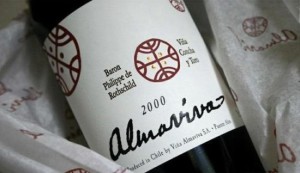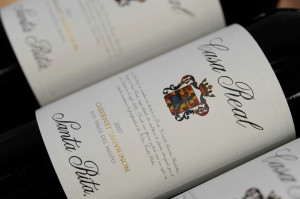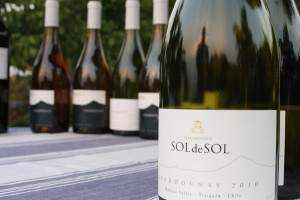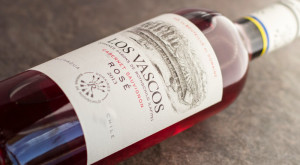“I like on the table, when we’re speaking, the light of a bottle of intelligent wine.”
― Pablo Neruda
Chile’s specific location plays a key role in understanding it’s grape cultivation. Since in this case, unlike other wine-producing areas, there is a need to deal with not just it’s distance from the equator, it’s relief or the effect of the larger bodies of water, but also with it’s isolation.
[CustomTables]
Chile is a particularly long and narrow country, it’s 4300 kilometers of length is associated with only an average width of 110 kilometers. It is surrounded by the Pacific Ocean to the west, the Andes to the east, the Atacama desert in the north and the South Pole and the ocean in the south. The country’s highest mountain is the largest volcano in the world at the same time.
The country’s warm, dry climate reminds us most of the Mediterranean area in Europe. The climatic conditions which are due to the location of the country are mitigated by the Pacific Ocean, the Humboldt Current and the Andes, to the extent that the summer evenings may become especially cool. Thanks to the country’s isolation and climate, the devastating diseases are less common as elsewhere. Given the very low risk of infection, most of the spraying can be omitted and this means a major competitive advantage in economic terms.
The melting of the Andean snow fields feeds numerous rivers, which ensure clean and readily available water for the plantations. As the irrigation is allowed in this South American country with dry climate, viticulture is much more predictable than in the European continent, where tighter control and a less balanced weather bounds the vintners.
Despite the fact that the Spanish had the biggest impact on the history of the country -and they introduced the local people to wine-making-, the French model, especially Bordeaux was the gold standard at the designing of the basement buildings and the choice of grape varieties during the spread of viticulture. The Cabernet Sauvignon is still one of the most important grape varieties in Chile.
The other iconic variety of the country is Carmenere. This grape is also from Bordeaux, where, it has already lost it’s significance. In some cases Merlot wines are still made from Carmenere. The late-ripening variety gives a full-bodied red wine, if the yield is properly restricted.
The northern part of the country is rather known for it’s table grape production and the processing of the raw material of “pisco”, the local brandy with protected origin. The most prestigious wine regions with the largest yields are located in the middle of the country, while the exploration of the coolest regions in the south -as areas of major potential in terms of white wine-, has just began recently.
Here you will also find the Atacama Desert, the Valle de Luna but the Easter Islands also belong here, where enormous stone figures will greet the travelers instead of trees and bushes. It is likely that many people do not know that since 2005 the country joined the company of the largest salmon producers on the planet.
Poet Pablo Neruda, Claudio Arrau, writer Isabella Allende and tennis player Marcelo Rios were born in Chile.
We will represent the six best wines of Chile in the next few lines (according to our opinion):
6. Almaviva

Born of a joint venture between Concha y Toro and Baron Philippe de Rothschild (Mouton Rothschild in Pauillac), Almaviva is now the icon of Chilean wines.
Product of the beautiful land of El Tocornal in the Maipo Valley near Santiago, Almaviva runs on 85 hectares and is the result of a careful blend of three varietals (70% Cabernet Sauvignon, 27% Carmenère, Cabernet franc 3%).
5. Montes

Aurelio Montes, one of the largest winemakers in South America has managed since the mid-1980s to raise its Montes Alpha Cabernet Sauvignon to the top category of Chilean wines.
The consistency of it’s production since many years places it undoubtedly at the top of national wines. The house is now developing the concept of terroir in the Colchagua Valley, in Apalta, to be precise.
4. Santa Rita

In the sixteenth century, the Spanish bring with them the first vines to Chile. Three centuries later, wealthy families like Fernández Concha (founders of the Santa Rita domain), import the first plants of Bordeaux varieties. Meanwhile, French oenologists -deprived of work in the phylloxera crisis- bring their expertise and contribute significantly to the expansion of the Chilean vineyard.
The flagship of the house, Casa Real Reserva Especial is currently one of the best wines. A dominant Cabernet Sauvignon, this wine has a body and a fruitiness that adapt perfectly to the barrel aging. It’s eucalyptus notes are discrete, certifying its origin without breaking the harmony, while the silky tannins are exemplary. Today, the range of Santa Rita wines has expanded with the arrival of the Carmen vine. It’s flagship, the cuvée Gold, has an unrestrained power.
3. Errázuriz

The Chadwick family owns this house founded in 1870 by Maximiano Errázuriz. He had bet on the soil of Panquehue in Aconcagua Valley.
It’s highland areas with significant temperature differences, the presence of sea breezes and a very strong sunlight proved him right.
2. Viña Aquitania

Created in 1990 by four personalities of the wine world: Bruno Prats (former owner of Cos d’Estournel), Paul Pontallier (General Manager of Château Margaux), Ghislain de Montgolfier (Bollinger) and Felipe de Solminihac (Chilean oenologist), the vineyard of Viña Aquitania is situated in the outskirts of Santiago.
The winery produces a range of four wines, with the excellent red Lazuli and the best white wine of Chile, Sol de Sol, from Traiguén in the Malleco Valley.
1. Los Vascos

This domain owns 3600 hectares, from which 580 is planted. 57 % of the company belongs to the Domaines Barons de Rothschild (Château Lafite Rothschild) and 43% to Santa Rita (who does not play an active role) since 1988.
Its peculiarity is to be planted with two varieties, Cabernet Sauvignon for red wines and Chardonnay for the white cuvée Los Vascos. The range also includes six red wines with the flagship Le Dix from Los Vascos, which was created to celebrate the tenth anniversary of the purchase of the domain. This wine is now part of the elite of Chilean viticulture, very influenced by the Bordeaux style.
Thank you for your attention, in our next article we will investigate the another South-American country, Argentina, in terms of it’s viticulture and wines. If you want more, we wrote about the top notch wines of Uruguay, Australia, Germany, United States and Austria as well. I wish you a nice day!
